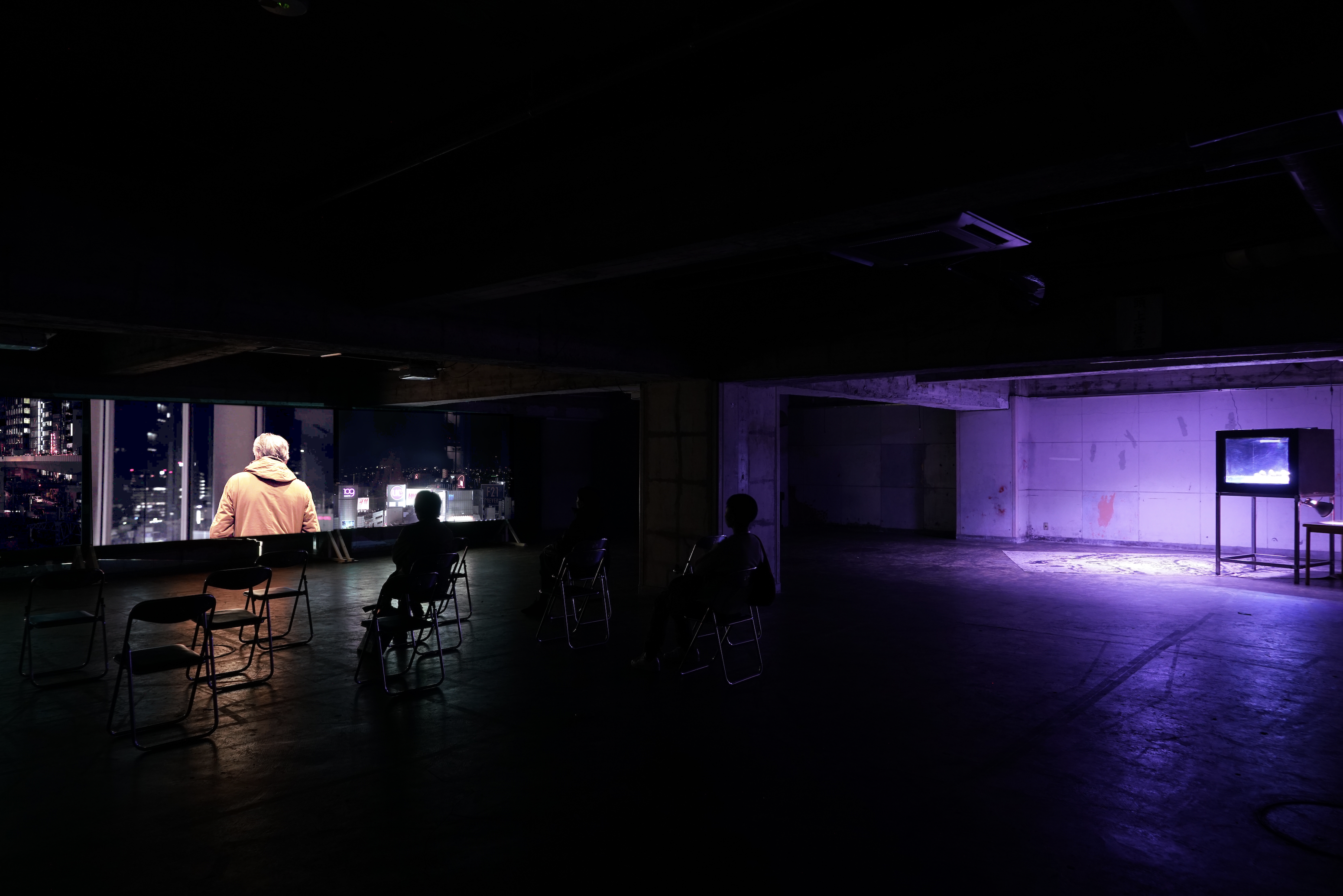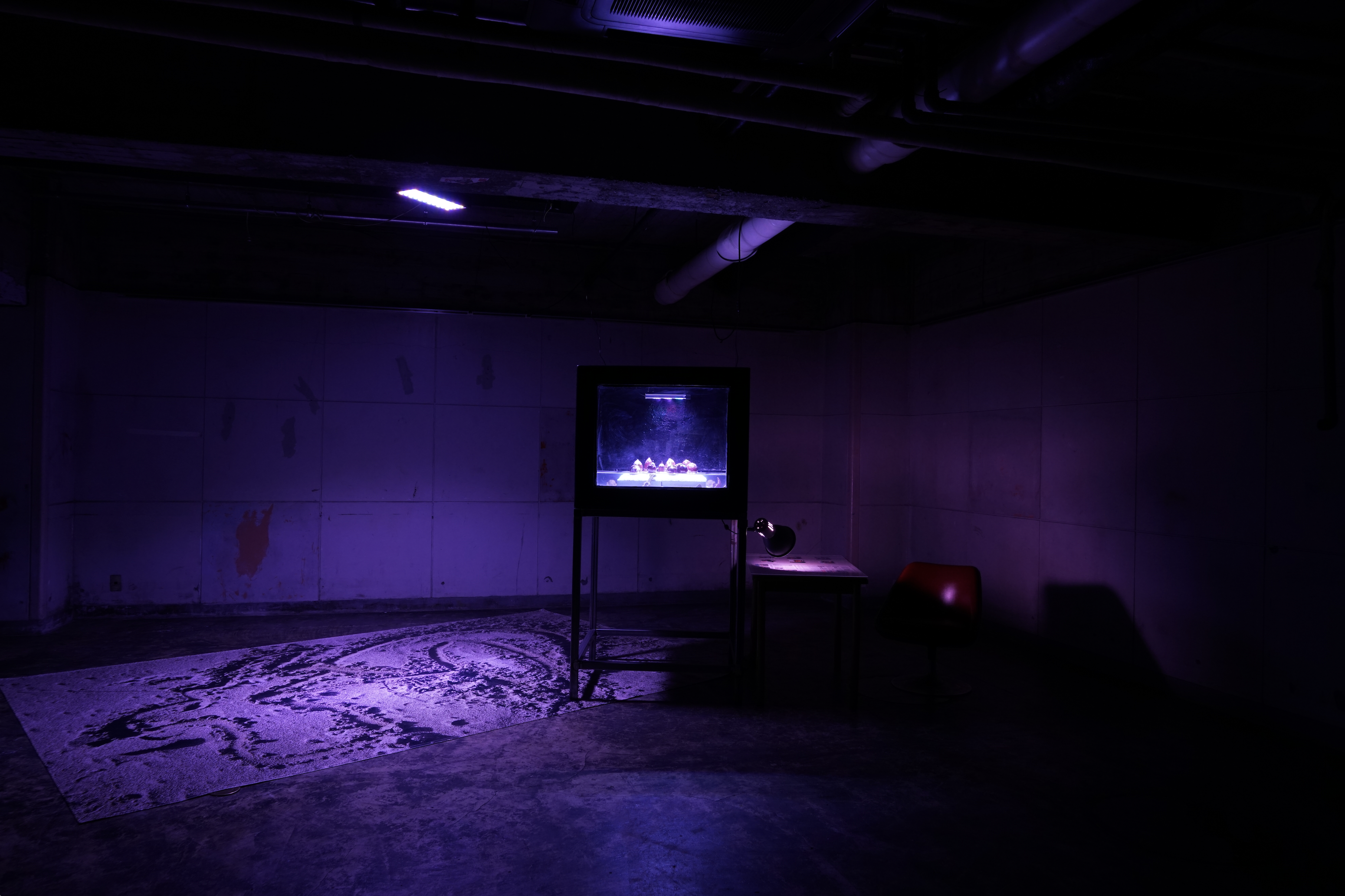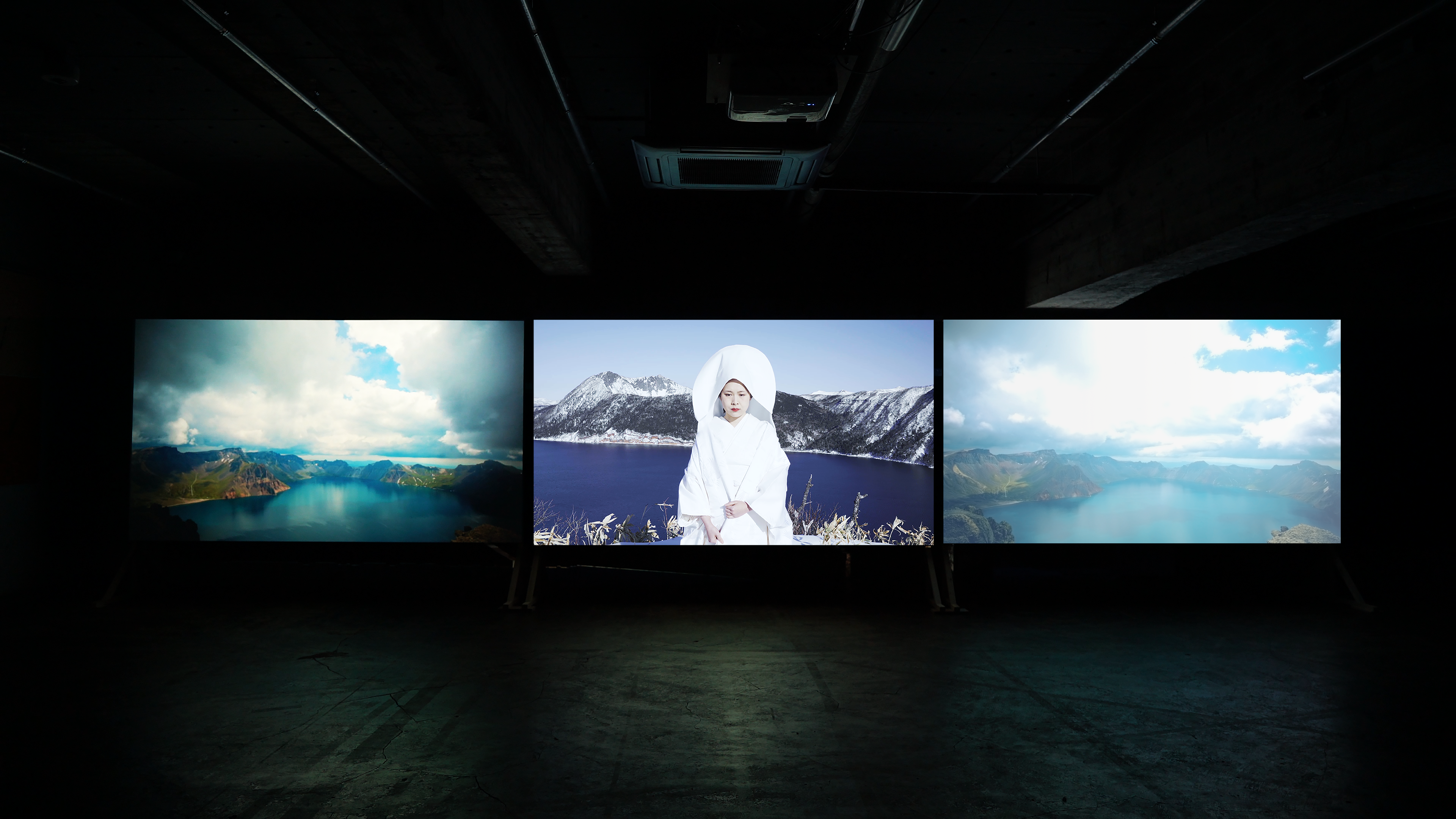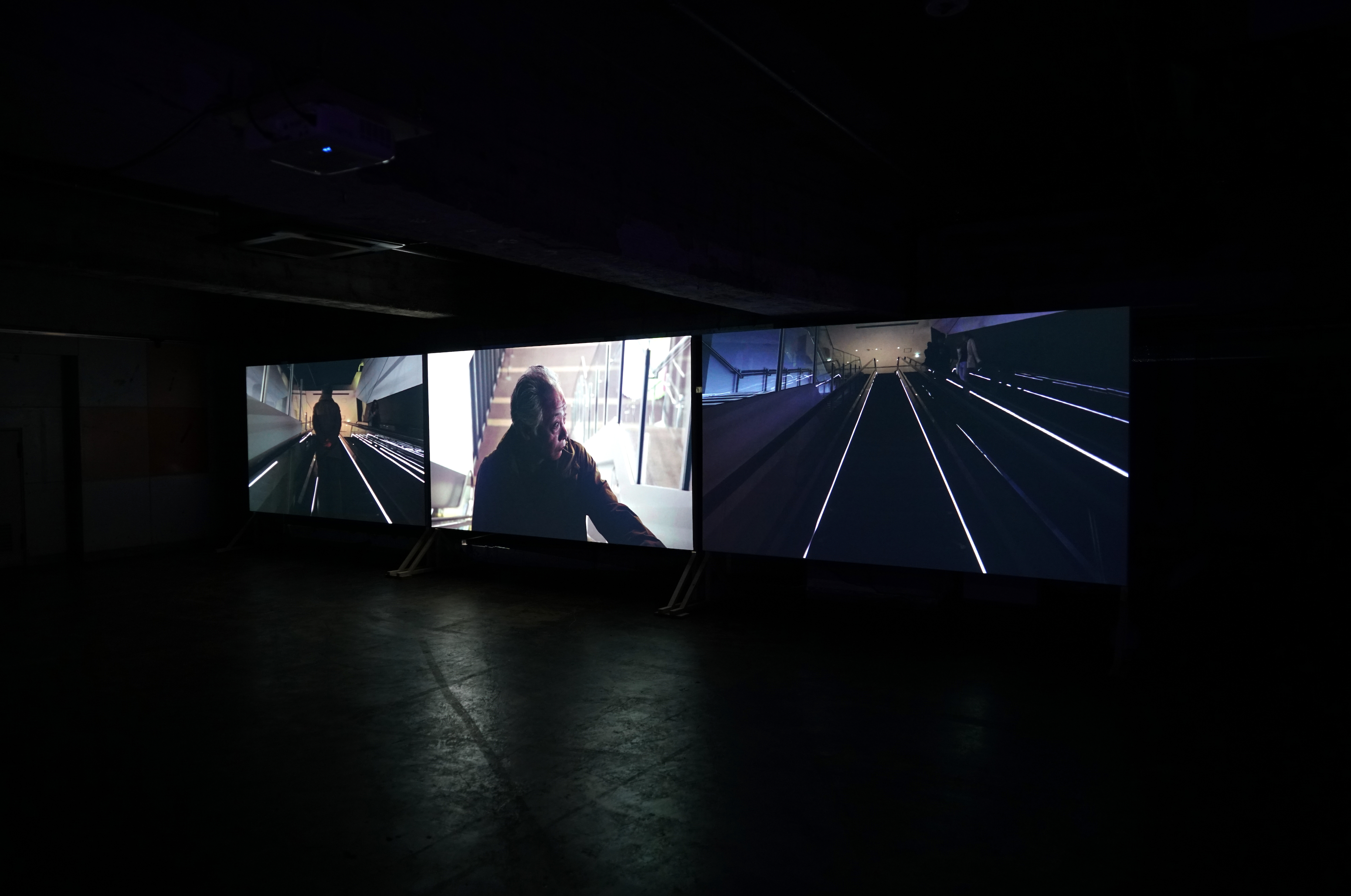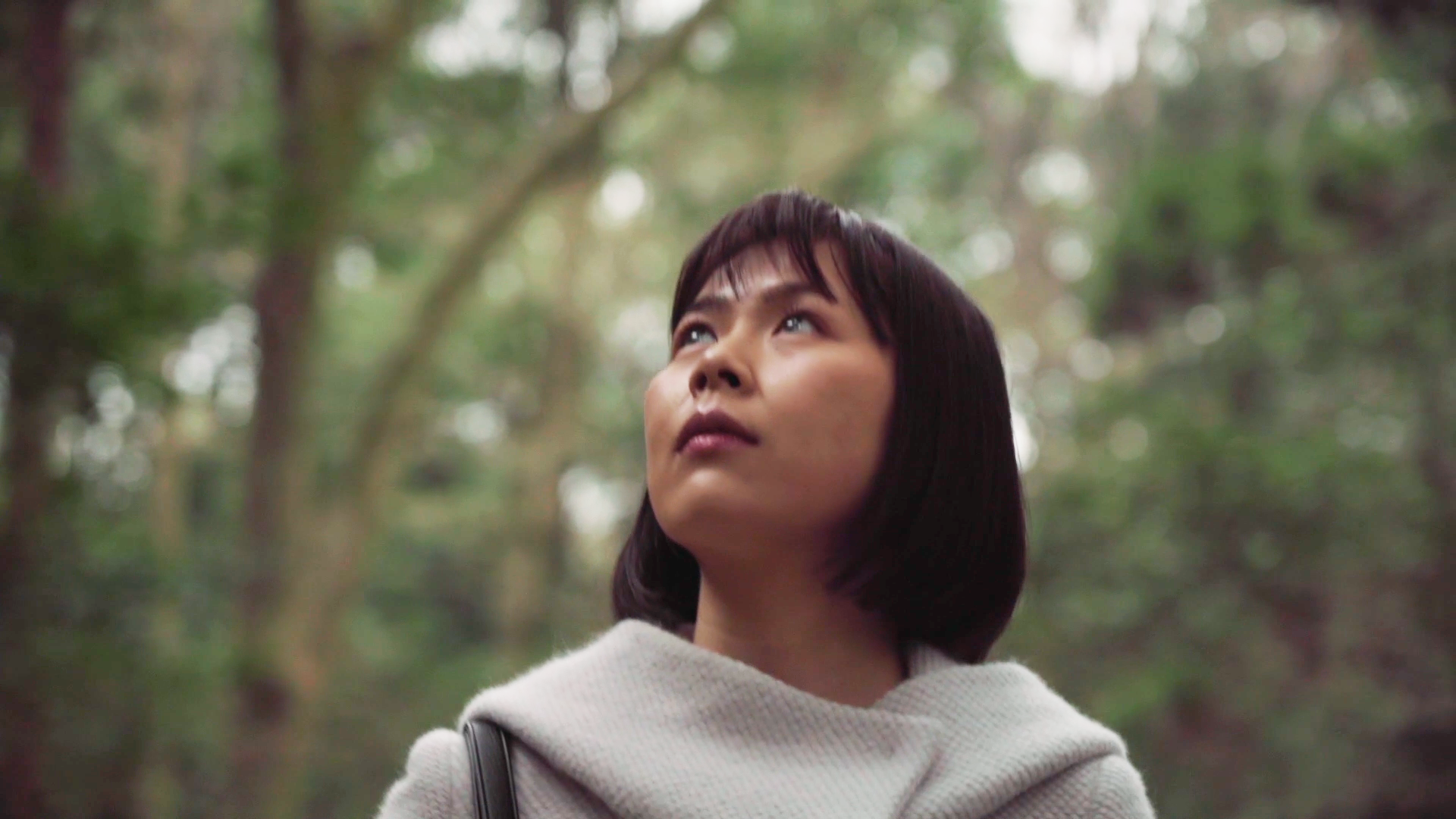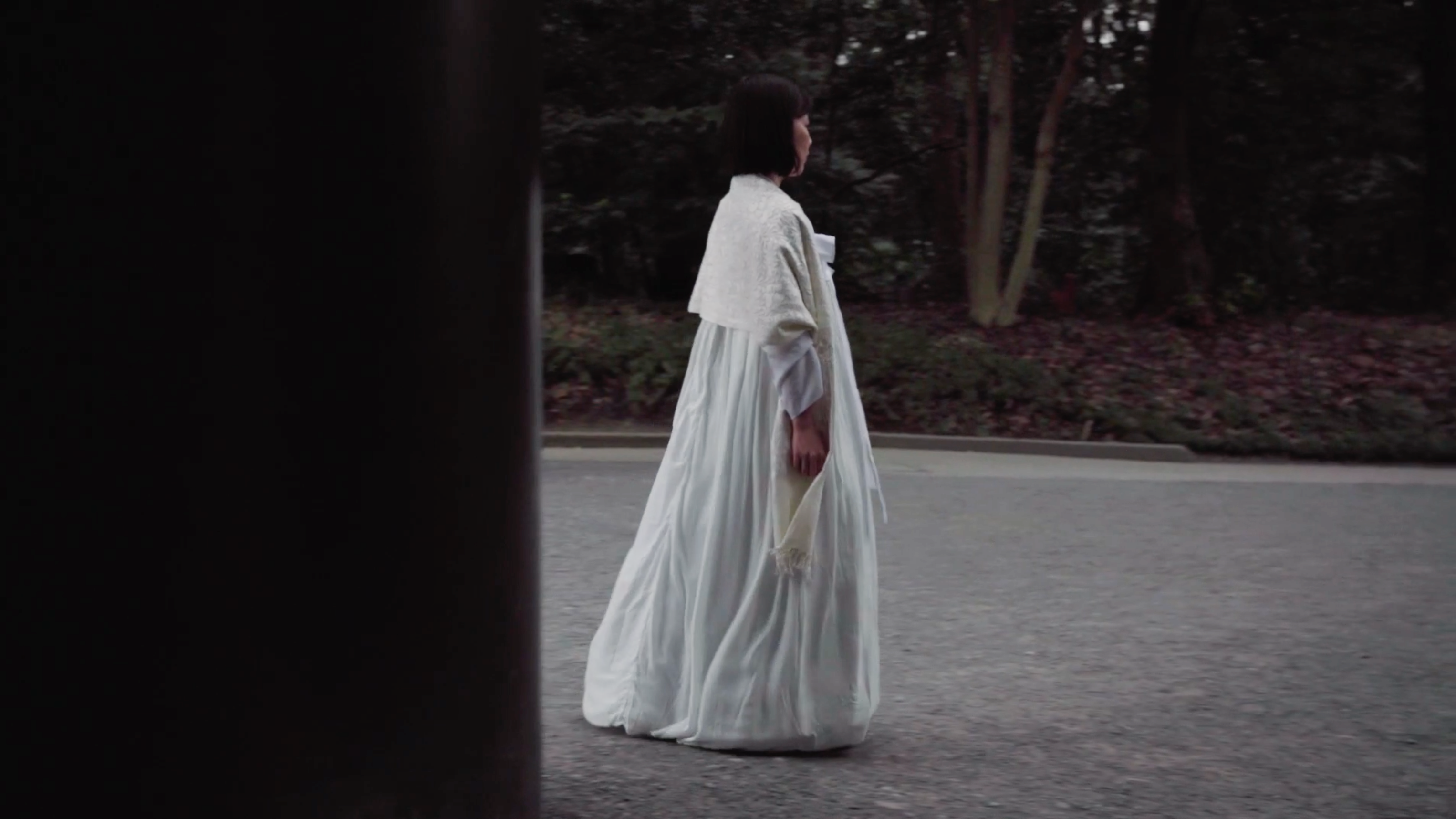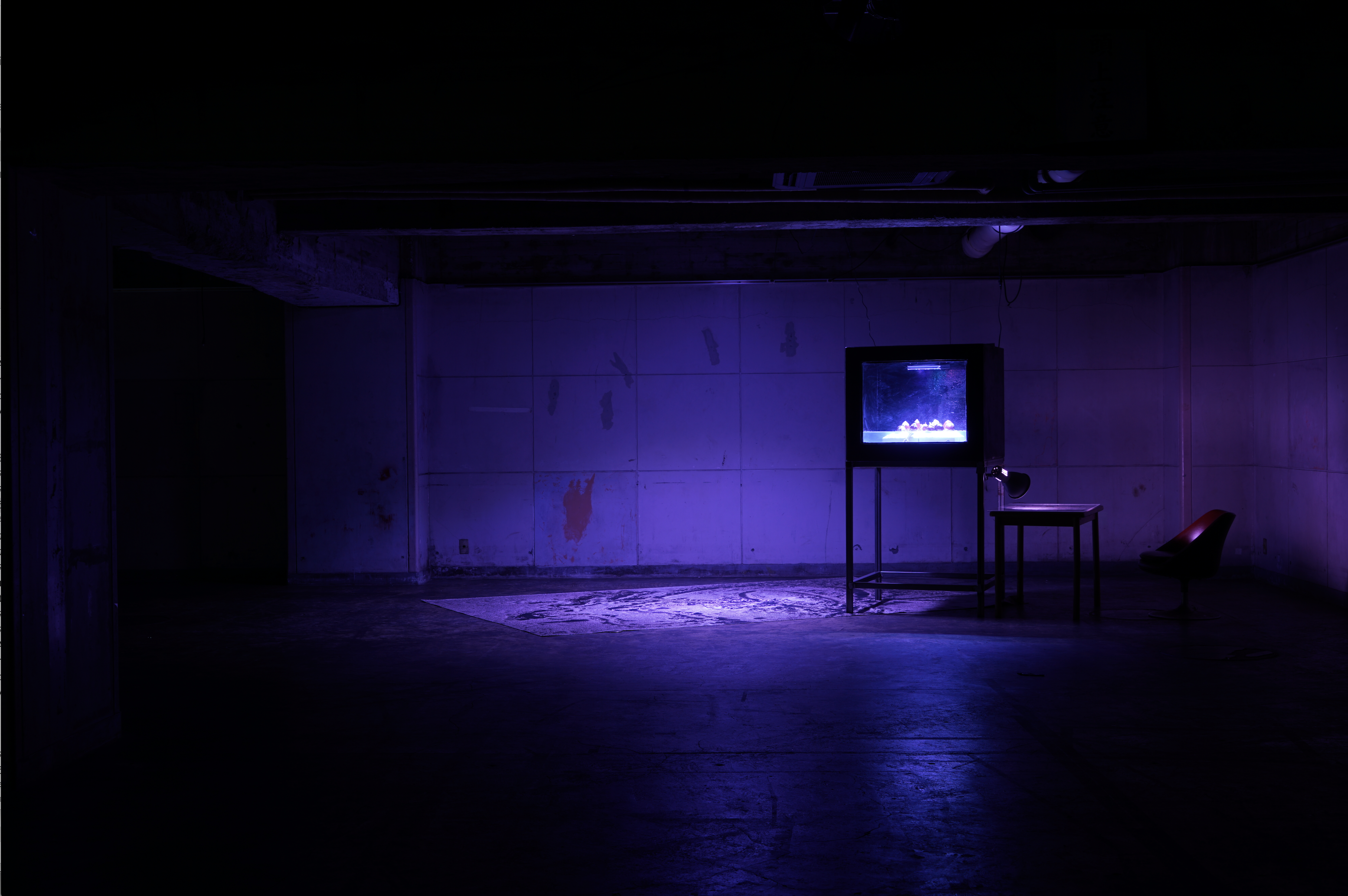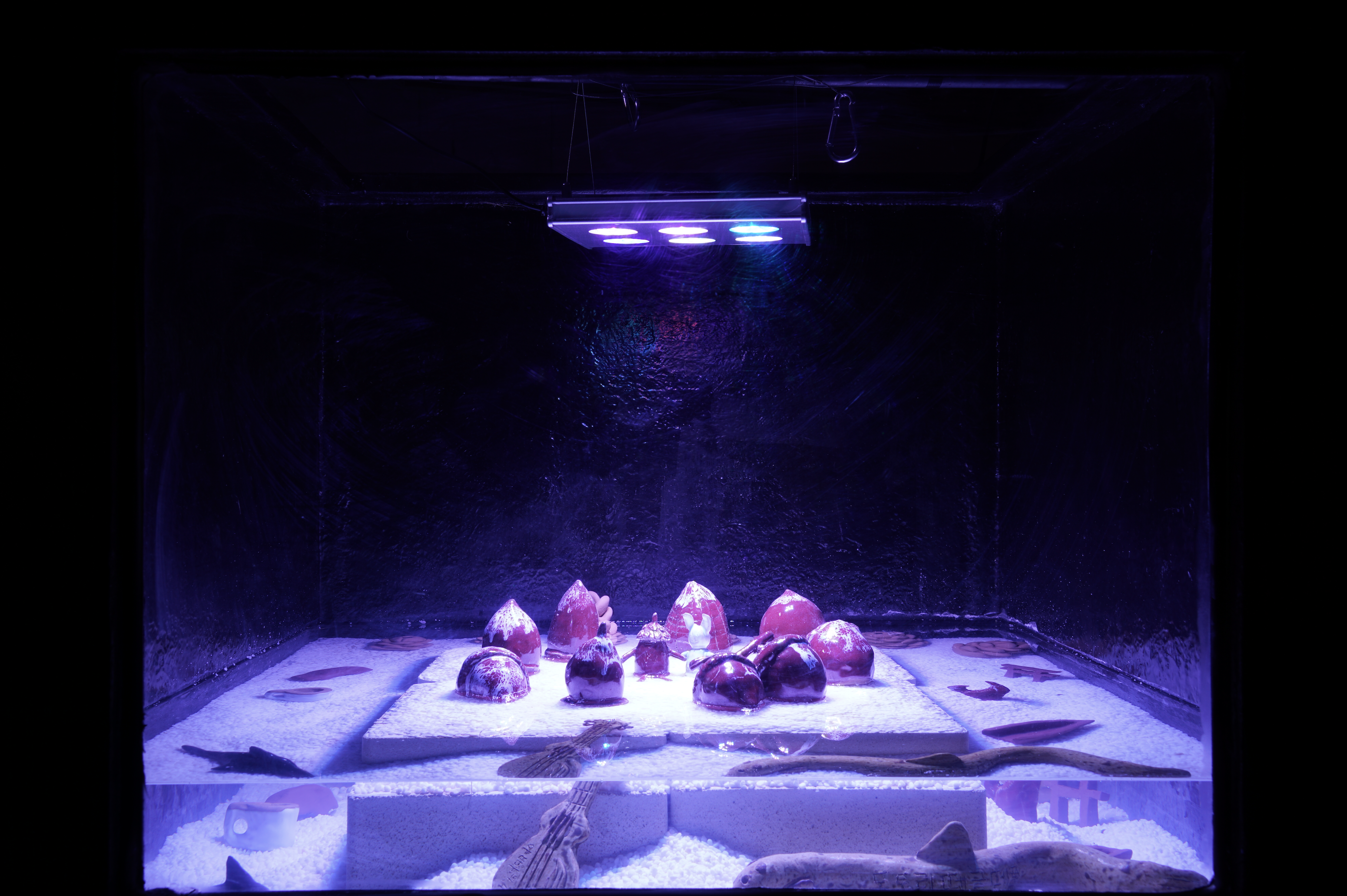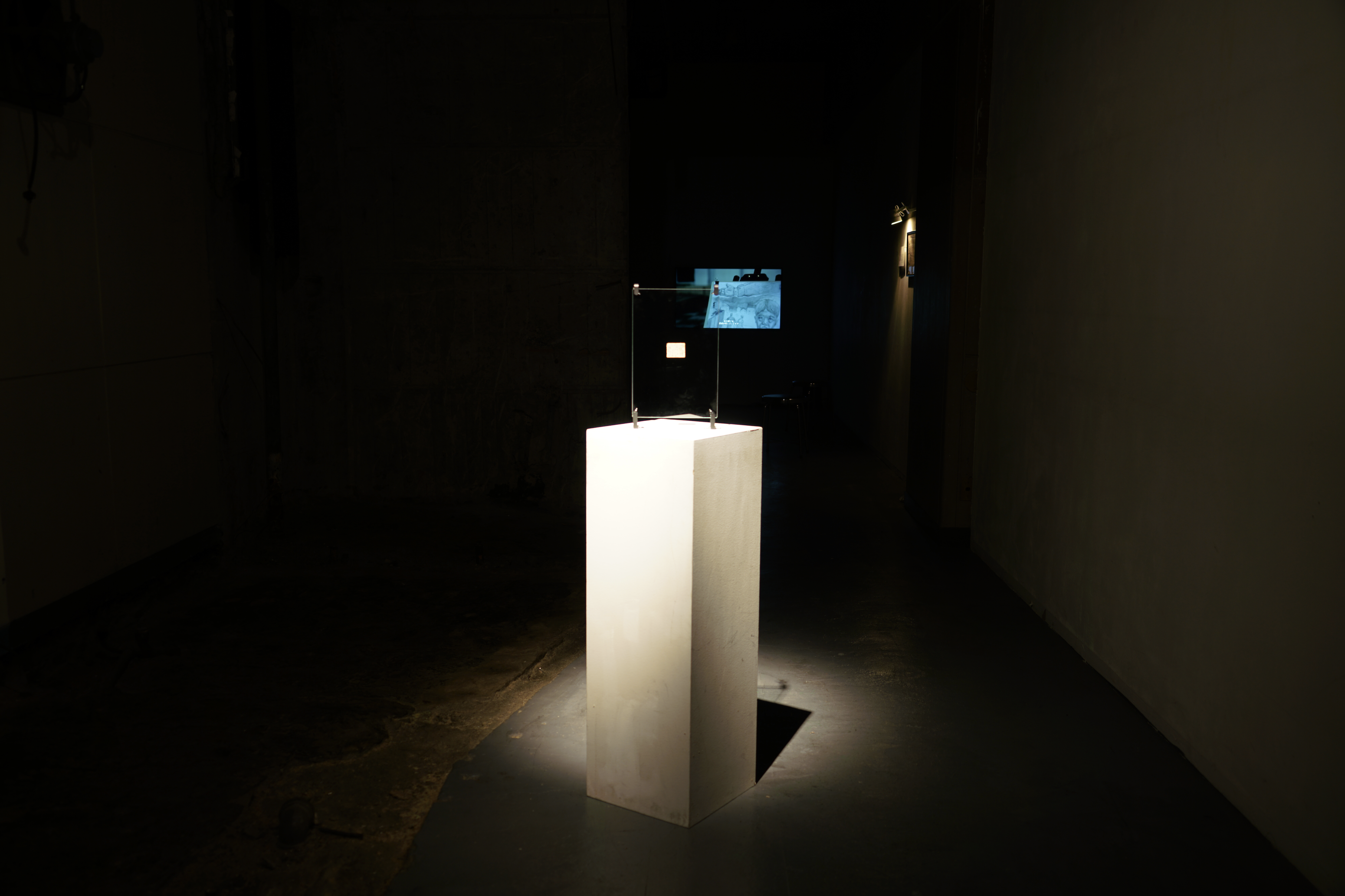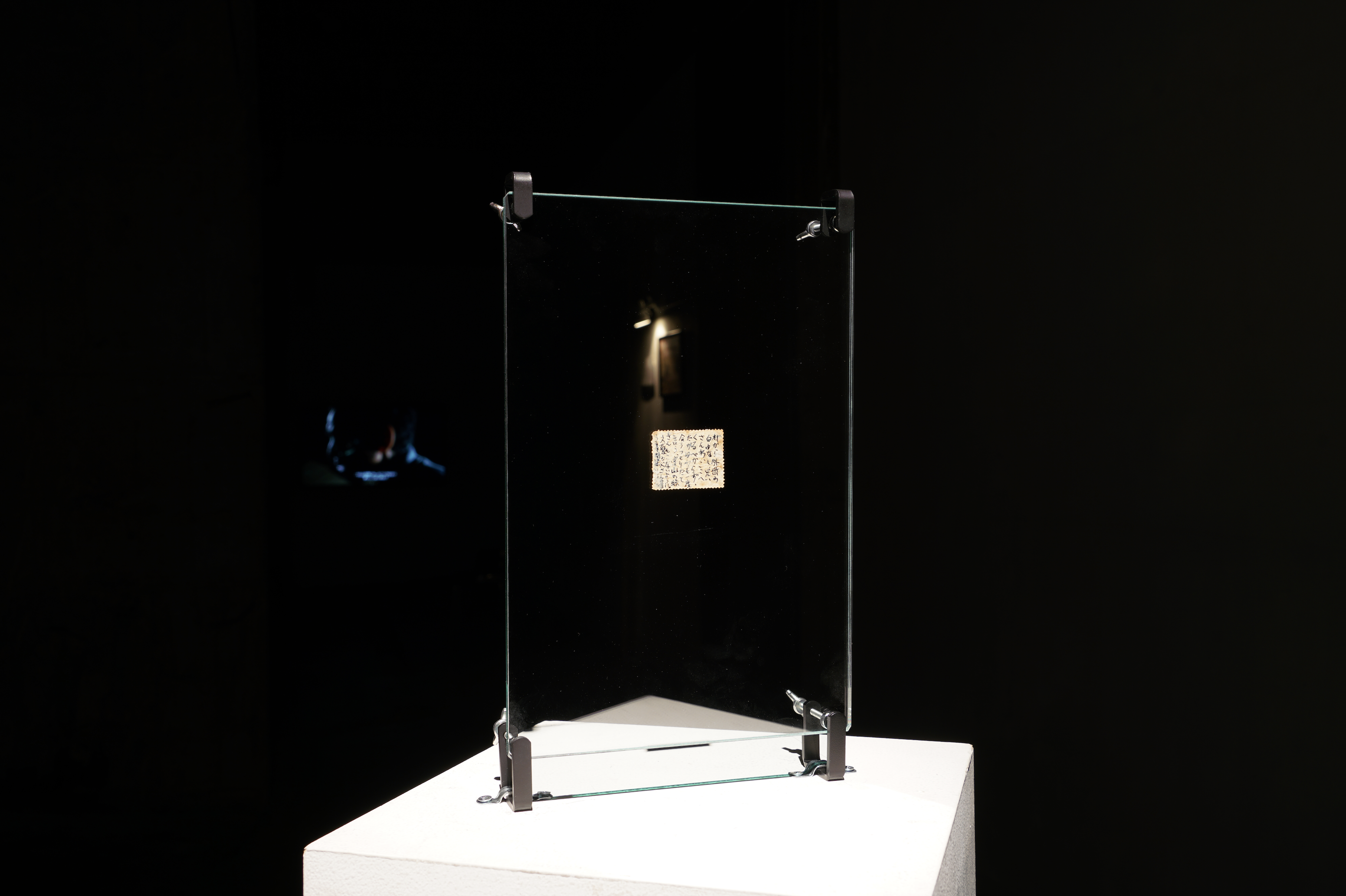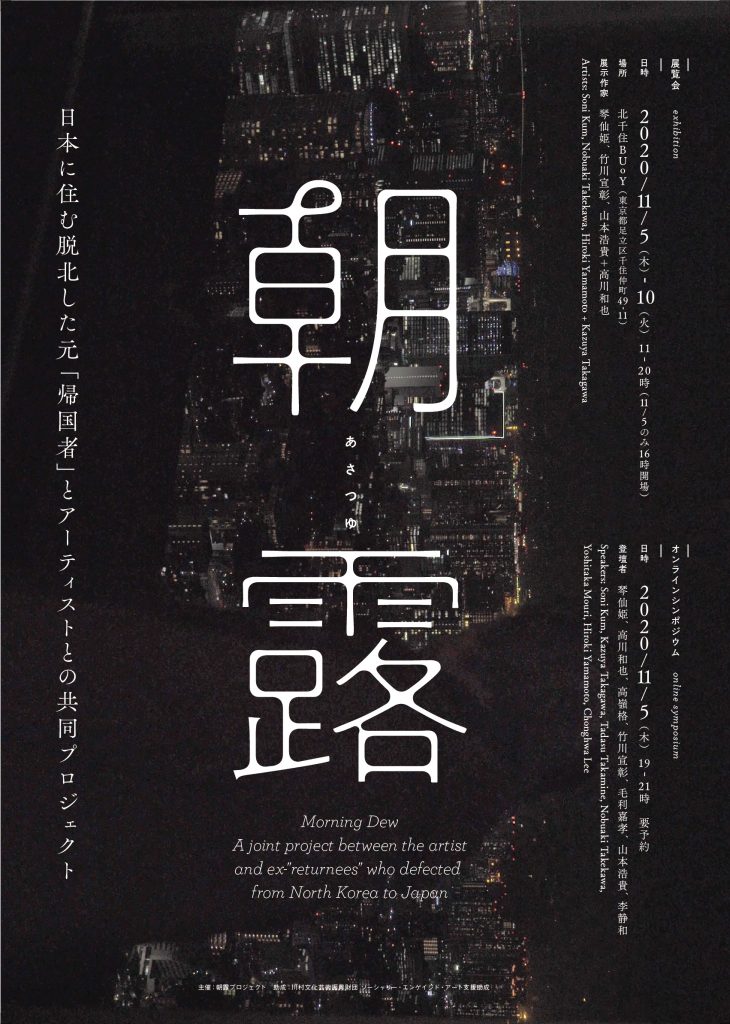– A collaborative project between the artist and ex-“returnees” who defected from North Korea to Japan
In collaboration with artist Hiroki Yamamoto + Takagawa Kazuya, and Nobuaki Takekawa, and curator Yumiko Okada
Click the play button ▶︎ to view in autoplay mode. Or you can directly click on the image to advance to the next images.
Morning Dew, exhibition view, 2020, BUoY, Tokyo
Morning Dew is a collaborative project between artists and former North Korean returnees living in Japan. There are currently around 200 North Korean ex-returnees living in Japan. Many of them are Koreans living in Japan or their descendants who emigrated to North Korea as part of the “Repatriation Project” that took place from the late 1950s to the early 1980s. They believed in the reported fantasy of a “paradise on earth” and emigrated to North Korea. Most of them were Koreans from what is now South Korea. These “returnees” were then forced to live a harsh life in North Korea, which was in the midst of reconstruction from the Korean War. Former “returnees” living in Japan are forced to hide the fact that they have left North Korea. If they do not, they experience difficulties in their daily lives.
The project was initiated from 2019 to 2020 in collaboration with artist Hiroki Yamamoto + Takagawa Kazuya, and Nobuaki Takekawa, and curator Yumiko Okada. With the collaborative effort, we were able to meet 16 ex-returnees or their descendant based in Tokyo and Seoul during the course. Most of them hide their identities and live in Japan secretly. Needless to say, it was the first challenge to find and meet them.
Under these circumstances, each artist attempted to find and meet who are former ‘returnees’ from North Korea living in Japan. Each artist’s work, created through their personal encounters, was presented in the form of an exhibition and a symposium, which opened up a series of discussions.
The title of the project, “Morning Dew”, is a song sung by the South Korean student movement in the 80s, symbolizing the rebirth of something pure and beautiful after a dark night of the soul.
Morning Dew – The stigma of being “brainwashed” (2020), 60min
by Soni Kum
The exhibition view, 2020, BUoY, Tokyo
Click the play button ▶︎ to view in autoplay mode. Or you can directly click on the image to advance to the next images.
Still images from the video
Click the play button ▶︎ to view in autoplay mode. Or you can directly click on the image to advance to the next images.
This video work is based on Kum’s experiences with 15 former “returnees” who have defected and are living in Japan, whom she met and interviewed between July 2019 and July 2020. “The ex-returnees” refer to Zainichi Koreans who lived in Japan before emigrating to North Korea.
“The ex-returnees” have no place in the Zainichi community in today’s Japan, and they are afraid that their remaining family members in North Korea might be taken away to internment camps. In addition, they fear that they might be discriminated against if their neighbors or acquaintances knew they were North Korean defectors. Kum faced the predicament that she could not film their faces while making this video work.
In the midst of this aporia, Kum decided to create a video work composed of three screens, using footage from multiple sources, including the live-action scenes with actors, archival materials, footage donated by friends, and footage downloaded from online sources.
Kum doesn’t directly know the people who appear in archive footage. Many of them have probably already passed away. Through collaboration with people across time and space, she wove a poetic video piece, which traces the fragmentary vestiges of violence.
Cast: Hikari Waza (和座 彩) , Manabu Ishikawa, Harunori Kojima
Director of Photography: Yukiko Iioka
Music: Stace Constantinou, Anastasia Vronski
Technical cooperation: RAM Association (Graduate School of Film and New Media, Tokyo University of the Arts)
Installation: Issei Yamagata
Support: Kawamura Arts and Cultural Foundation, Socially Engaged Art Support Grant (SEA)
Archive image contribution:
Jane Jin Kaisen
神戸映画資料館
康浩郎
一般財団法人 宮本記念財団
Ngā Taonga Sound & Vision
NPO法人映画保存協会
International Committee of the Red Cross (ICRC)
Special thanks to:
北朝鮮難民救援基金 (Life Funds for North Korean Refugees)
北朝鮮帰国者の生命と人権を守る会
“Tottori Korokoro” (Installation, 2020)
By Nobuaki Takekawa
“Someday, instead of my father, I would definitely like to visit Tottori, which my father misses so much. My father told me stories about his memories of playing on the beautiful beaches of Tottori, so everything is etched in the corner of my mind about where to go and what to see. I could tell my father, ‘I went to your hometown, dad!’ How pleased he would be if I could report to him that.“
— Myung-Joo Kim, from “The Defectors” by Shin Mihwa,
What is unique about the book, “Defectors” by Shin Mihwa among the research materials Takekawa collected was that it tried to inspire other defectors and related projects by focusing on their “success stories” after their defection, rather than focusing on the painful experiences of defectors from North Korea. He picked up this book when he searched for the books related to “North Korean defectors” in Japan on Amazon and bought several books. It was “unintentionally mixed” with the other books. The Morning Dew Project is a project that focuses on North Korean defectors living in Japan, their Japanese wives, and the repatriation projects. The book “The Defectors” which was “unintentionally mixed” with other books was about defectors in South Korea.
There was only one related story written in the book. In the chapter on Chung Ki-won, a “professional protector of North Korean defectors,” it was mentioned that the grandparents and father of Kim Myung-joo, who was featured as one of the defectors, migrated to North Korea from Tottori in Japan as part of the repatriation project. Takekawa began to think that he would like to start the Morning Dew project by trying to contact Myung-Joo Kim.
Myung-joo Kim defected and now lives in Seoul. Her father still lives in North Korea.
Click the play button ▶︎ to view in autoplay mode. Or you can directly click on the image to advance to the next images.
The exhibition view, 2020, BUoY, Tokyo
On February 16-20, 2020, Takekawa welcomed four members from South Korea to Tottori Prefecture for a four-night stay to visit various seaside areas as her father’s hometown. During the trip, we learned about the Korean residents in Tottori Prefecture and the repatriation project, as well as the historical exchange between Tottori and the Korean Peninsula. His group somehow shared a warm atmosphere while accepting that her life was torn apart by politics and history.
Kazuwa-yaki pottery, which has been passed down in Kurayoshi City, was once popular as miscellaneous utensils for the common people. Myungjoo Kim’s father may have used it. In the workshop of Kiyoshi Nakamori, the third generation of Kozuwa-yaki potters, she made acorn objects as a gift to her father.
Acorns are called “tottori/ 토토리” in Korean. Takekawa doesn’t know if it was intentional or accidental, but Myungjoo Kim’s father taught his daughter, who was born in North Korea, the song “Donguri Korokoro” (“Rolling acorns”). When Takekawa read the lyrics again, the part “We played together for a while, but I missed the mountain so much that I cried and annoyed acorn” sounded sad.
Takekawa added pottery made in his atelier in Saitama to the locally produced Kamigamiyaki pottery to create an installation as a waterscape, overlapping the pond of “Donguri Korokoro”, the Sea of Japan, and the memories of the trip. The floor is covered with a photograph of a map of the Sea of Japan drawn by Myungjoo Kim on the beach.
Special Thanks to:
申美花、西村芳将、赤井あずみ、奥村尚正、笹山大志、植田祐介、on Lee、藤原勇輝、三谷昇、鄭然旭、中森清 、木下公勝、岡田有美子、ゲストハウスたみ、他
来日して頂いた皆様:キム・ミョンジュ、ジョ・イェジン、イ・キョンへ、チョン・ギウォン
https://takekawanobuaki.com
https://www.otafinearts.com/artists/51-nobuaki-takekawa/
Testimony (2020, 24min)
by Hiroki Yamamoto and Kazuya Takagawa
Click the play button ▶︎ to view in autoplay mode. Or you can directly click on the image to advance to the next images.
The exhibition view, 2020, BUoY, Tokyo
The stamp on the glass plate:
On the back of the stamp on the letter to Kinoshita’s brother, the secret message was written, asking his brother not to come to North Korea because there was no freedom.
The video work:
In The Poetics of Space, written in 1957, Gaston Bachelard notes, “Every great image has an unfathomable oneiric depth to which the personal past adds special color.” As this imaginative French philosopher put it, the “image” of reality that a person envisions may be intricately intertwined with the “dream” that the person sees. And, within the complicated entanglement, how does the “personal past” can be situated? To what extent can art really be an effective means of unraveling the “Gordian Knot”?
In the fall of 2019, we began interviewing a male former “returnee” from Japan. He “returned” to North Korea in the 1970s and “defected” to Japan around 2010. The interview went smoothly, as we asked about life in North Korea and the circumstances of his defection, but then we suddenly encountered a situation that made us greatly perplexed. During the interview, in a response to a casual question I posed as a kind of an “ice break,” the man began to speak suddenly and awkwardly. The question was quite simple: “tell us about an impressive dream you had in North Korea. The content of the dream that he told us was so unusual that it was difficult to tell where the dream began and where the reality began.
We decided to delve into his dream as deeply as we could. How is it connected to the realities of postwar Japan and North Korea, which he experienced firsthand? Or are they disconnected? Was the image of a “democratic nation” that Japan dreamed of after the war, or the image of “Heaven on Earth” that North Korea dreamed of following the division of North and South due to the Korean War, part of the strange – at least they seem to be so to us – dreams of men? And how does “History” (if there is such a thing) capture his existence in a constrained manner?
Can a dream be a “testimony” to reality? But if reality and dreams form an intertwining entanglement, why can’t dreams testify to reality (or at least some of its phases)? In the first place, is there a clear-cut boundary between dream and reality?
Finally, what do all of these attempts throw back at us?
協力:
木下公勝
稲田禎洋 川田淳 星野歩 高信翔
November, 2020
朝露 日本に住む脱北した元「帰国者」とアーティストとの共同プロジェクト
Morning Dew
A joint project between the artist and ex-“returnees” who defected from North Korea to Japan
『朝露』はアーティストの琴仙姫を中心に2019年に始まったプロジェクトです。今回、琴がコラボレーションしたいアーティストに声をかけ、意見交換しながらそれぞれが自分なりの方法で日本に住む脱北した元「帰国者」の方やその子孫の方々とコンタクトを始めました。他者の経験を聞き、その背景について知ることを通じて作品を制作し、展示とシンポジウムを行います。
◆展覧会 exhibition
2020.11.5(木)〜10(火)11時〜20時(11/5のみ16時open)
北千住BUoY(東京都足立区千住仲町49-11) http://buoy.or.jp/
入場料:500円
展示作家:琴仙姫、竹川宣彰、山本浩貴+高川和也
Artists : Soni Kum, Nobuaki Takekawa, Hiroki Yamamoto + Kazuya Takagawa
※ 週末の作家在廊予定:
2020.11.7(土)15時〜17時
2020.11.8(日)13時〜16時
※ 琴仙姫の映像作品(60分)は毎時0分に始まります。
◆オンラインシンポジウム online symposium
2020.11.5(木)19時〜21時 オンライン配信のみ・参加無料、要予約
登壇者:琴仙姫、高川和也、高嶺格、竹川宣彰、毛利嘉孝、山本浩貴、李静和
Speakers: Soni Kum, Kazuya Takagawa, Tadasu Takamine, Nobuaki Takekawa, Yoshitaka Mouri, Hiroki Yamamoto, Chonghwa Lee
配信会場:theca(コ本や honkbooks)
https://honkbooks.com
協力:RAM Association(東京藝術大学大学院映像研究科)
主催:朝露プロジェクト
助成:川村文化芸術振興財団 ソーシャリー・エンゲイジド・アート支援助成 (Socially Engaged Art Support Grant project supported by Kawamura Arts and Cultural Foundation)
http://www.kacf.jp
◆プロジェクト『朝露』とは
『朝露』は、日本に住む脱北した元「帰国者」とアーティストとの共同プロジェクトである。現在日本には約200人あまりの北朝鮮からの脱北した元「帰国者」が住んでいる。日本に住む脱北者の多くは1960年代後半から70年後半にかけて行われた「帰国事業」により北朝鮮に移住していった在日朝鮮人たち、或いはその子孫たちである。彼らは当時「地上の楽園」として報道された幻想を信じ移住して行った。殆どは現在の韓国出身の在日朝鮮人たちであった。見ず知らずの土地に移住した「帰国者」たちはその後、朝鮮戦争復興の貧窮真っ直中にある北朝鮮で過酷な生活を余儀なくされることになった。日本に住む元「帰国者」は、脱北したという事実を隠す必要に迫られている。隠さないと日々の生活に困難を経験するためだ。
このような状況下で、実際に日本で暮らす脱北した元「帰国者」の人々に、それぞれのアーティストが会いに行く。話を聞いたりする経験をとおして作家達自身がインスピレーションを培いながら、作品制作と展示に繋げていく。個人的な出会いを通して作り出されたそれぞれの作家の作品を、展示とシンポジウムの形で発表し、ディスカッションの輪を広げていく。
プロジェクトのタイトルである「朝露」は、韓国の80 年代の学生運動で歌われた歌であり、暗い夜を過ごした後、純粋で美しいものに再生していく様子を象徴している。
■展示作家略歴
◆琴 仙姫(クム ソニ/ Soni Kum)
アーティスト、映像作家。東京生まれ。2005年カリフォルニア芸術大学 (Cal Arts) 映像科修士課程修了。2011年東京芸術大学先端芸術表現領域美術博士課程修了。2011年より2015年まで韓国の延世大学などで非常勤講師として働きながら、ソウル文化財団からの支援を受け脱北者たちとのアートプロジェクトを推進。2016年からはポーラ美術振興財団在外研修員としてロンドンにてLive Art Development Agencyのリサーチ・アーティストとして研修。NY apexart (2012), ロンドン Pump House Gallery(2012)、韓国 釜山ビエンナーレ(2014)、ベルリン MEINBLAU project space(2017)などで展示。www.sonikum.com
◆竹川宣彰(タケカワ ノブアキ/ Nobuaki Takekawa)
1977年東京都生まれ。平面、立体、インスタレーションなど多岐に渡る表現方法で、独自のセンスとユーモアに富んだ作品を制作。国内外で数多くの展覧会に参加しながら、デモなどの路上の活動にも加わり、社会・歴史と個人の関係を常に問い直している。近年参加した展覧会は「理由なき反抗 」ワタリウム美術館(2018)、ウラジオストクビエンナーレ(2017)、シンガポールビエンナーレ(2016)、あいちトリエンナーレ(2016)など。 http://takekawanobuaki.com
◆山本浩貴+高川和也
山本浩貴(ヤマモト ヒロキ/ Hiroki Yamamoto)
1986年千葉県生まれ。2010年一橋大学社会学部卒業。2018年ロンドン芸術大学博士課程修了(PhD)。2013年から2018年までロンドン芸術大学TrAIN研究センターに博士研究員として在籍。韓国・光州のアジア・カルチャー・センター(ACC)でのリサーチ・フェローを経て、2019年まで香港理工大学デザイン学部ポストドクトラル・フェロー。現在、東京藝術大学大学院国際芸術創造研究科助教。
高川和也(タカガワ カズヤ/Kazuya Takagawa)
1986年熊本県生まれ。2012年東京藝術大学大学院美術研究科絵画専攻修了。 近年は、精神病理学や心理学の方法論を参照した映像やドローイング、文章等の作品を制作。主な展覧会に「ソーシャリー・エンゲイジド・アート展:社会を動かすアートの新潮流」(3331 Arts Chiyoda、2017)、「大京都」(京都:Re-Search、2017)、「ASK THE SELF」(Tokyo wonder site 本郷、2016)、「screen」(HIGURE17-15cas、2014) など。
◆主催:朝露プロジェクト
◆助成:川村文化芸術振興財団 ソーシャリー・エンゲイジド・アート支援助成
◆プロジェクトコーディネーター:岡田有美子
◆アシスタントコーディネーター:樋熊冬野、宮川緑
◆協力:東京藝術大学大学院映像研究科、RAM Association
◆お問い合わせ:朝露プロジェクトmail asatsuyuproject@gmail.com
BUoY http://buoy.or.jp/
〒120-0036
東京都足立区千住仲町49-11(墨堤通り側入り口)
東京メトロ千代田線・日比谷線、JR常磐線/東武スカイツリーライン
「北千住」駅出口1より徒歩6分、西口より徒歩8分
Exhibition Photo Report by ART iT
https://www.art-it.asia/en/top_e/admin_expht_e/212255
